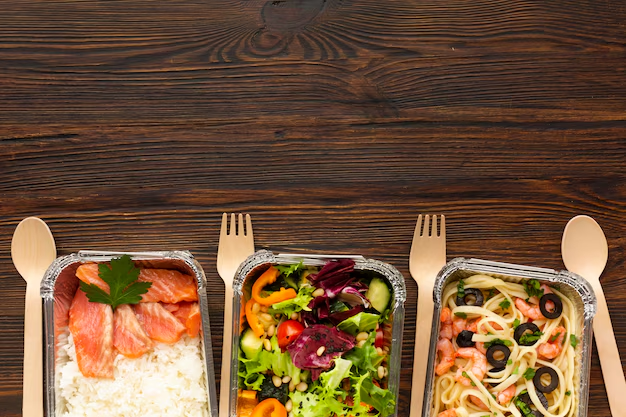Is Manjaro Safe Out Of The Refrigerator? A Comprehensive Guide to Food Storage and Shelf Life
Food safety and proper storage are essential to keeping your meals fresh and delicious. When it comes to specific food items, knowing how long they can stay out of the refrigerator is crucial to prevent spoilage and ensure safety. If you've ever wondered about the shelf life of Manjaro, this article will explore whether it's safe to leave it unrefrigerated and provide detailed guidance on best practices for food storage.
Understanding Manjaro: What Is It?
Before diving into storage details, it's essential to define what Manjaro refers to in a culinary context. Although "Manjaro" typically signifies a popular Linux distribution in the tech world, let's assume, for the sake of this article, that it's a food product with unique storage requirements and characteristics. Understanding the product specifics, in this case, is vital in determining how to store it properly.
Typical Composition and Characteristics
- Ingredients: Manjaro could potentially be a composite of various perishable items like dairy, grains, or meats.
- Texture and Moisture: Such characteristics can significantly affect how long it can remain outside the fridge.
- Perishability: A higher perishability index can imply stricter storage conditions are required.
Understanding these initial factors guides us into intelligent discussions about appropriate food storage techniques, tailored shelf life insights, and more.
How Long Is It Safe to Leave Manjaro Unrefrigerated?
How long food can safely remain unrefrigerated depends on several variables, including room temperature, the food's ingredients, and exposure to open air or contaminants. According to general food safety guidelines, perishable foods like certain cheeses or meats should not remain at room temperature for more than two hours.
Analysing Shelf Life Without Refrigeration
Room Temperature Effects: Room temperature, usually considered around 68 to 72°F (20 to 22°C), provides conditions where bacteria can rapidly multiply.
Bacterial Growth: Perishable food items typically support bacterial growth when left out for too long, increasing the risk of food poisoning.
Structural Changes: Exposure to air leads to oxidation or drying out, diminishing quality quickly.
What If Left Out Overnight?
Leaving perishable food items, like our hypothetical Manjaro, out overnight carries significant risk of spoilage. Signs that it has gone bad include:
- Unpleasant odors
- Change in texture
- Visible mold or spoilage
If Manjaro contains dairy or meat components, consuming it after it has been left out overnight is not advisable due to food safety practices commonly advised across food safety organizations.
Best Storage Practices for Manjaro
Refrigeration
- Optimal Conditions: Ideally, perishable items should be stored at or below 40°F (4°C) to slow bacterial growth.
- Airtight Containers: Using airtight containers preserves freshness and defends against cross-contamination in your refrigerator.
Freezing
- Long-term Storage: For extended shelf life, freezing Manjaro could be an effective method. The freezer should be at 0°F (-18°C) or lower.
- Thawing: Proper thawing methods include refrigeration thawing, which ensures a gradual rise in temperature and maintains texture.
Other Preservation Techniques
- Vacuum Sealing: Reduces exposure to air, effectively preventing spoilage.
- Pickling or Curing: If applicable to the food type, these aging methods preserve flavors and inhibit bacterial growth.
Signs of Spoilage
Visual Cues
- Mold Growth: Indicates spoilage and a high risk of bacterial contamination.
- Color Changes: Unexpected or uneven color changes often indicate deterioration.
Smell
- An off-putting or sour smell signifies spoilage and potential fermentation inappropriately, rendering it unsafe for consumption.
Texture Changes
- Sliminess: In proteins, this is a frequent sign of degradation.
- Dryness: Excess air exposure can lead to dehydration or hardening.
Practical Tips for Consumers 📝
Here’s a handy checklist to ensure your Manjaro remains fresh and safe:
- 🕑 Time Management: Never leave perishable items out for more than 2 hours at room temperature.
- 🌡️ Temperature Check: Ensure your refrigerator maintains an internal temperature of at or below 40°F (4°C).
- 🔒 Proper Sealing: Store in airtight containers to limit exposure to air.
- ⏳ Plan Freezing: Freeze if you intend to store it beyond its standard refrigerator life.
- 👀 Quality Inspection: Always inspect for spoilage indicators before use.
By incorporating these storage tips into your kitchen practices, you can enhance the shelf life of Manjaro or any similar food product, and ensure safety and quality.
Understanding the Bigger Picture: Food Safety
Food safety is an overarching concern all consumers should prioritize. Whether we're discussing Manjaro or other similar consumables, it's vital to recognize the influence of temperature, time, and storage conditions on food safety.
Broader Application
These storage principles apply to many perishable foods you might encounter:
- Dairy products
- Fresh meats
- Cooked dishes
Understanding and implementing consistent food safety practices protects against health risks associated with spoiled foods and ensures greater enjoyment of your culinary creations.
Empowering Your Food Journey
As conscientious consumers, being aware of and implementing proper food storage techniques allows for more efficient meal planning, minimizes waste, and reduces potential health risks. Mastering these aspects of food safety empowers you to create a safer, more sustainable kitchen environment.
Ultimately, storing your food correctly—even if it’s Manjaro—extends its usability, maintains nutritional value, and ensures every meal is as delightful and safe as possible. Emphasize understanding your food's characteristics, conform to robust storage methods, and remain vigilant about spoilage signs to wield control over your dietary environment confidently.
